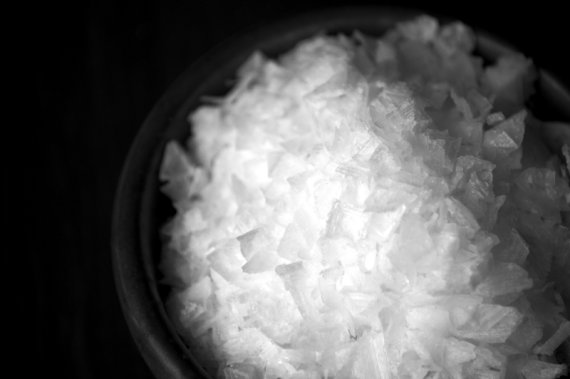‘This is not a typical working day for me, you know,’ says Jeroen Knol, a research at Fresh, Food and Chains, just to get that quite clear. He is luxuriously seated in the Echoput restaurant (one Michelin star) in the woods near Het Loo Palace. Chef cook Leendert Scholtus is serving the speciality of the day: a low-salt menu. Dutch food is generally too salty, which leads to high blood pressure and eventually to raised risks of cardiovascular diseases. So for the Food4You knowledge festival Scholtus and Knol put their heads together on how to cook tasty low-salt dishes. Scholtus and Knol are trying the result today. The starter is bread with olive oil and tapenade. Bread is responsible for a large proportion of the salt intake in the Netherlands: the proportion of salt to flour it contains is roughly 1.8 percent. However, the bakers’ branch organization is leading the way in lowering salt levels. Scholtus serves two kinds of bread: one with 0.55 percent salt and one with about double that. The breads are clearly distinguishable, both visually and by taste. The low-salt bread is not tasty enough on its own, in Scholtus’s view. But fortunately, once it has been dipped in olive oil and tapenade you wouldn’t notice that. As he eats, Knol sums up a few tips for cooking with less salt. ‘It begins with awareness. Which foods contain a lot of salt? Those that do can be cooked with 20 to 25 percent less and you won’t notice it.’ Cooks can also leave out the salt and compensate with other ingredients, flavourings and cooking methods. ‘Take tasty ingredients such as mushrooms, tomatoes and cheese,’ says Knol. ‘You can also get a stronger flavor with less salt by frying things with a thicker crust, concentrating the salt in layers or creating an interesting texture.’ The second course is a mini-pizza. Here Scholtus saves on salt by using cheese that was only salted for a short time. He also made his own tomato paste without the added salt that is in commercial pastes. In the next course, steak tartar, no salt has been added to the meat. Its flavor comes mainly from the added dill mayonnaise and the Pholiota mushrooms it is stuffed with. By way of compensation a few salt crystals have been sprinkled over the top to provide an intense burst of flavour. If nothing else, the collaboration with Scholtus has raised awareness. There has certainly been more discussion and experimentation around salt in the Echoput kitchen recently. Scholtus: ‘I recently got very cross about all the salt in the pizza for my little boy.’ It is going to be quite a challenge to convert the average cook, he thinks. Preprocessed food often contains too much salt and not all cooks have the time, the knowledge or the means to make everything themselves. Knol: ‘What is more, people are used to food that tastes of too much salt.’
Knol and Scholtus are presenting their menu today at the Food Professional Day of Food4You.

